“I received an email from Shelley from Carnegie Mellon. I was not so sure what she wanted,” said Mager. “At the time, we were building the Service Design Network; we decided to go to Chicago to meet with a group of people. I thought, since Shelley is in the United States, she could come to Chicago. I was thrilled and amazed when she said yes.”
Said Evenson, “It’s funny, I do remember, I asked you for articles you had written, and you said they were in German. I said, send them anyway, and I put them into Google translate and made sense of it, which was remarkable!”
In Chicago, said Mager, “we had a good talk, good beer, and good jazz, and we made friends!”
A couple years later, while Mager and Evenson were speaking at an event in Florida, they found they had become frustrated with not making as much progress in furthering the field of service design as they had hoped. Walking along the beach in Sarasota in 2006, “we decided that we needed to do something,” said Evenson. “I said, I have able grad students. Other grad schools have their students put up conferences, why shouldn’t we?”
That same year, Evenson, Birgit, and the Carnegie Mellon School of Design hosted the Emergence Conference. “We ended up with a very remarkable service design global conference,” said Evenson. “People came from all over and they were so excited they were going to have an international service design conference.”
The decision on that beach walk to host a conference was a tipping point for the SDN. At the time, Mager was already conducting service design projects with large German companies, “but on a scale that was not really remarkable at all,” she said. “The SDN was a pioneer group that collaborated, and we really enjoyed the type of work we were doing, but we were a bit isolated.
“We felt that we were the pioneers, but we realized around 2006 that there was a movement starting. More and more people were getting interested in service design, and starting to work with it on an academic and practitioner level.” There on the beach, Mager and Evenson had reflected on the need for a platform where those interested in service design could connect. “That was where we made the decision to build the Service Design Network as a community for practitioners, academics, and business, to share and to develop the field,” Mager said.
“The [Emergence] conference itself felt very much like a community of learning, co-creating a profession, together,” said Evenson. “We brought together those thinkers and visionary people who were already testing those big topics. The collaborations between Carnegie Mellon and Köln International School of Design, and Linköpings Universitet in Sweden, and the Politecnico de Milano—they built the ground for many things that would happen about three or four years later,” said Mager.
As leaders in the field of service design, Mager and Evenson have had to manage the challenges of being seen as authority figures in a field that prizes co-creation. “Being ambassadors of the field always demands courage to take the lead and at the same time requires you to leave a lot of openness to the community,” said Mager. “Some people call me the ‘mother of service design.’ I always knew that wasn’t true, but at the same time, people need leadership and openness. It is something that was and is still challenging to me in being one of the ambassadors of service design.”
“I totally agree with Birgit,” said Evenson. “It’s all about co-creation. Being persuasive enough—with your clients, with your colleagues, and others—in order to take the time to do that co-creation, and do it effectively, is one of the biggest challenges. Especially now, with Agile, for instance—some of these things take time. Service design is fundamentally about serving people, and so if you don’t have a good understanding of that then you are not going to be able to deliver on that promise. Having enough time, and taking time, are always the biggest challenges.”
Defining service design for those clients, colleagues, and others has been a challenge for service designers since those early days. “Sometimes it’s a bit tiring—that again and again and again, you have to explain,” said Mager. She continued, “Of course that is not the fault of the people who ask, but is maybe the fault of strategic communication and marketing. When you compare what service design as a field has achieved to what design thinking as a field has achieved, I think [design thinking] has done much better in terms of the promotion and marketing of the terms.
“Business leaders spend two days at Stanford and then come back and say ‘OK, design thinking, it is the new knowing.’ But service design is not easy to grasp or easy to promote within an organization. I sometimes wish that, in earlier times, we could have focused more on a marketing and PR strategy in parallel to our content strategy and our development of the field,” Mager said.
As many service designers can attest, talking about service design with other designers has gotten easier in the past couple years. Universities are increasingly offering courses in service design, and more and more companies are building internal teams. Said Evenson, “We hit the tipping point about three or four years ago. I think many large organizations are realizing that they have to serve their employees, and so traditional approaches to HR, recruiting, and etcetera are actually service design challenges.”



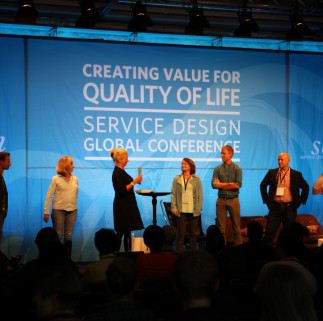
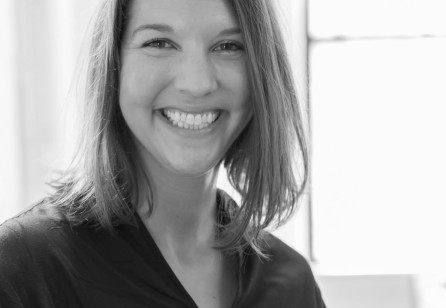
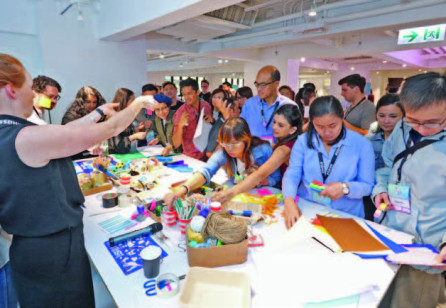
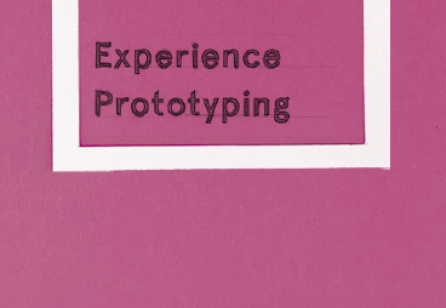
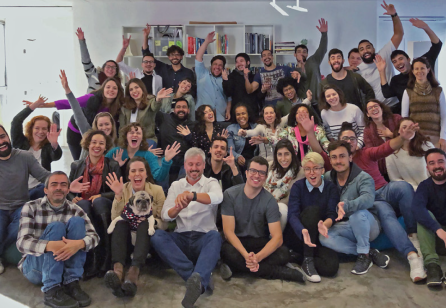

Share your thoughts
0 RepliesPlease login to comment